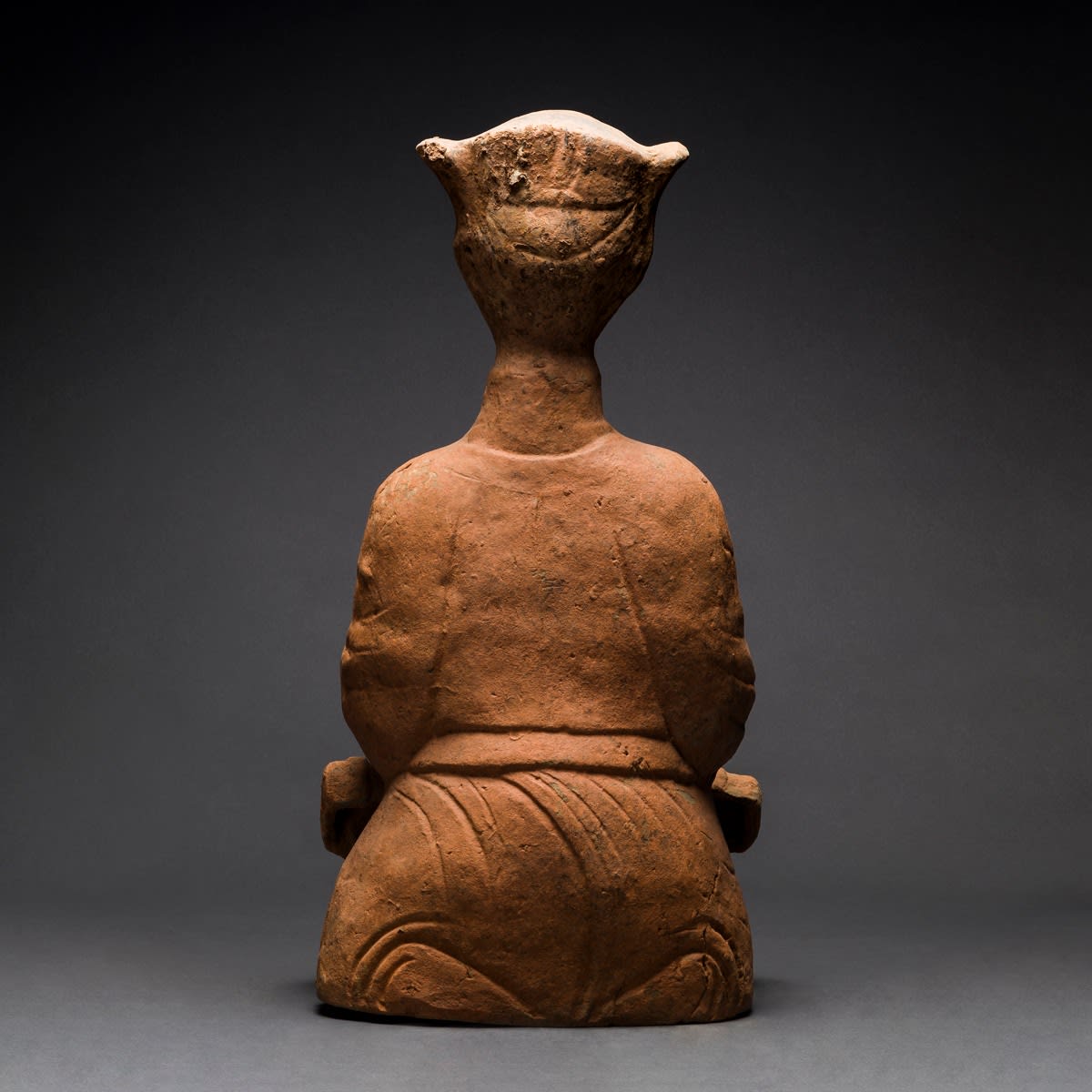Han Dynasty Polychrome 'Sichuan' Seated Musician, 206 BCE - 220 CE
Terra Cotta
59 x 29 cm
23 1/4 x 11 3/8 in
23 1/4 x 11 3/8 in
DL.1005
Further images
A type of work known as mingqi, literally translated as, “items for the next world,” this sculpture was specifically commissioned by the family of the deceased to be buried alongside...
A type of work known as mingqi, literally translated as, “items for the next world,” this sculpture was specifically commissioned by the family of the deceased to be buried alongside their departed relative, both as a symbol of their wealth and familial piety. However, only elite members of the social hierarchy could afford to be honored with such elaborate burials. During the Han era, the ancient Chinese believed that the afterlife was an extension of our earthly existence. Thus, the tombs of nobles and high-ranking officials were filled with sculpted renditions of their earthly entourage. Musicians, chefs, attendants, and guardians were placed alongside pots, vessels, cooking utensils, and herds of livestock. All these mingqi were expected to perform their functions continually throughout the afterlife.
The smile that graces the face of this wonderful musician is typical of the happy entertainers from the Sichuan Province. Dressed in a long robe and a short cap, he kneels with his hands lightly placed around the instrument. The artist, perhaps because he was portraying someone it was not appropriate to idealize or deify, captured the intimacy, vibrancy, and intensity of an actual man. Locked in this bit of clay, a smile, a laugh, and a will to entertain are still apparent to a modern audience centuries after its creation.
The smile that graces the face of this wonderful musician is typical of the happy entertainers from the Sichuan Province. Dressed in a long robe and a short cap, he kneels with his hands lightly placed around the instrument. The artist, perhaps because he was portraying someone it was not appropriate to idealize or deify, captured the intimacy, vibrancy, and intensity of an actual man. Locked in this bit of clay, a smile, a laugh, and a will to entertain are still apparent to a modern audience centuries after its creation.







